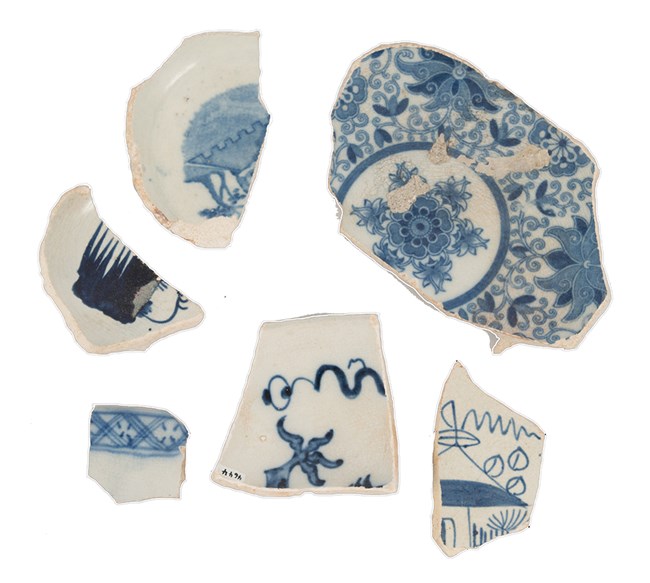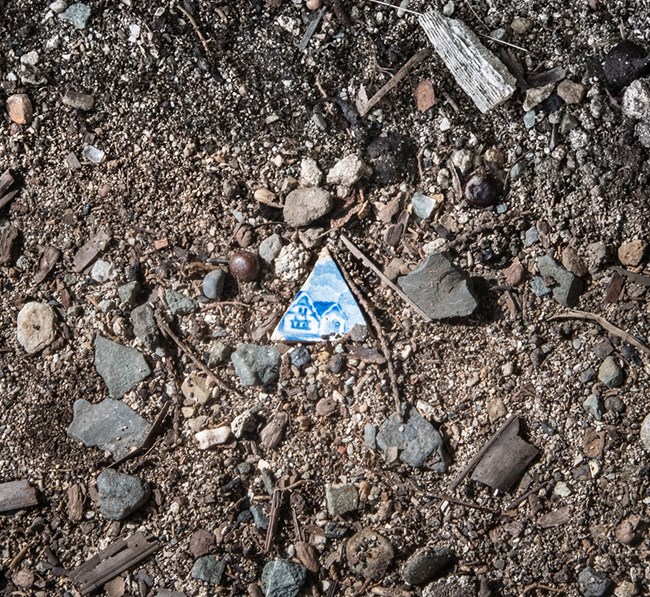
Rick Starr, for NPS. IntroductionFragments of European ceramics are buried under the soils of St Croix. They are everywhere, but only visible to the person aware of their existence. They provide a glimpse into a colonial past that, like the broken nature of the fragments themselves, is not as glamorous or romantic as once believed. St. Croix was a wealthy cosmopolitan port from the 1750s until the middle of the 19th century. The broken fragments of ceramic vessels imported as part of a Trans-Atlantic system of trade are symbols of the island’s connections to global economies and changing styles of ceramics. Today, some see these fragments as trash, some as economic opportunity, while others see history and heritage. This exhibition explores how these fragments of a cosmopolitan past are representative of a process of discovery, economy, and community identity present on the island today. This exhibit is divided into four sections: We claim the fragments We wear the fragments We find the fragments We live in the fragments This exhibit was created by Gitte Petersen-Westergaard, as a project to fulfill her Master of Sustainable Heritage Management, Aarhus University, Aarhus, Denmark; and by La Vaughn Belle, who originated the ideas for the exhibit. All photographs are by Rick Starr. Special thank you to Nathan and Brian Bishop from Crucian Gold, David Hayes, and David Brewer from the Virgin Islands State Historic Preservation Office for their generous contributions and assistance in the creation of this exhibit. 
Rick Starr, for NPS. We Claim the FragmentsChaney is regularly collected by Crucians and tourists visiting the island when they appear on the ground surface or shorelines of the U.S. Virgin Islands. But when is it okay to collect chaney found around the island? In the United States and its territories, historical and archaeological artifacts are managed and protected by Statute at various levels of goverment: Federal, state or territorial, and local. According to these laws, cultural resources, both above and underground, belong to the respective property owners. On federal or state-owned lands you are not allowed to take any materials from the ground. If the land is privately owned, the landowner determines the future of the artifacts and historical ruins on their property. This leaves us with a question - Can someone own the past or does the past belong to everyone? 
Rick Starr, for NPS. We Wear the FragmentsIn the past, when the pieces of pottery broke they were thrown away and perceived as trash. Brian Bishop, who grew up on St Croix, started to make jewelry in his teens. ‘Chaney,’ or broken pieces of ceramic, was one of the first materials he worked with as a jeweler. Today, the patterns that were painted on these ceramics hundreds of years ago are valued for their abstract designs. Bishop used to collect the chaney pieces himself, but nowadays he purchases them from various people who bring them to him for sale. Some people look at the things from the colonial period with resentment and see it as a symbol of oppression, whereas other people want to reclaim what was once lost. They want to take back the negative parts of history. -Nathan Bishop, Crucian Gold, St. Croix 
Rick Starr, for NPS. We Live in the FragmentsLa Vaughn Belle is an artist whose work responds to questions surrounding the coloniality of the Virgin Islands. It creates narratives that challenge the colonial process. She currently lives and works in St. Croix, Virgin Islands. La Vaughn Belle began this painting series in 2014, when she remembered an experience that she had at the Royal Copenhagen store in Denmark years before. While viewing hundreds of historic plates on display she realized that she had never seen an entire plate - she had grown up only seeing fragments. Later, when she encountered “chaney” at her studio she began thinking of them as “miniature paintings” that held these narratives of fragmented identities. Belle began the paintings by enlarging the patterns of the chaney to see how they could fit together. They became what she calls “process paintings.” "The process of making the painting is very similar to being a Caribbean person. We don’t have the full African, European, or Indigenous identity. The process is to piece the fragments into a whole." Some patterns are repeated, others are omitted; one has to rely only upon the imagination to recapture the patterns broken or lost. In doing so these paintings have become a symbolic gesture of restoration, a type of map that charts both the real and the imagined narratives of Caribbean people. |
Last updated: September 1, 2017
